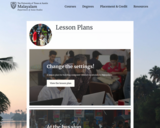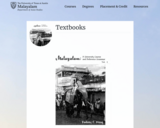
A lesson plan for building computer-related vocabulary in Malayalam.
- Subject:
- Arts and Humanities
- Languages
- Material Type:
- Textbook
- Provider:
- University of Texas at Austin
- Provider Set:
- COERLL
- Author:
- Rodney F. Moag
- Date Added:
- 12/13/2021

A lesson plan for building computer-related vocabulary in Malayalam.

This textbook was developed to meet two distinct yet related needs. The more basic goal was to respond to the paucity of teaching materials suited to the needs of U.S. learners of Malayalam, particularly at the university level. Though some materials had previously been produced both in India and in the US, including three sets of materials co-written by the author, none were at all suited to the needs and purposes of American university students. Some of the author is earlier materials were ad hoc in nature, while the 510-page course written for Peace Corps volunteers concentrated on language for daily social interactions only. Both the Peace Corps materials and most of the materials written in India were written in Roman
transcription, thus making no serious attempt to teach the Malayalam script or the skills of reading or writing.
The Malayalam ·materials produced in India by various scholars or teach~rs were not readily available in the West, and were moreqver designed for Indian learners for whom formal explanations of the grammar and culture are largely unnecessary, since many of the grammar and discourse conventions are similar or identical to those found in their own mother tongues. Thus the texts available at that time lacked much of what was essential to the Western learner of the language. A couple more sets of teaching materials have come out in: the intervening 20 years, and some may now be ordered via the Internet. A partial list of these materials appears in the prologue following lesson Twenty-five in this text. These books are, in
general, designed to prepare the learner to handle everyday living situations in Malayalam, and as such can be useful adjuncts once the present volume has been thoroughly studied.
This text was conceived and designed to go beyond social conversation to prepare the Western learner to use the language as a research tool. To meet this goal the skills pf literacy in Malayalam are essential, but this is only a beginning. It is also necessary to have some familiarity with the formal style of the language, used in most types of written matter and in platform and other types of formal speaking. This is still a need uniquely met by this text. The irony is that our student audience has grown and diversified, so that the textbook for the Malayalam classes here at Texas must serve two rather different types of students. There are still a number of graduate students who seek out Malayalam as a research tool for their academic work. fu the past dozen years or so the Malayalam classes are being taken by increasing numbers of second generation Malayalis who have either been born in North America or spent most of their lives here. They are normally undergraduates whose goals do not include doing academic research in Kerala. They are mainly interested in being able to communicate better with relatives in Kerala and their interest in literacy extends mainly to being able to
write letters to grandparents or other non-English-speaking relatives. The majority of lessons containing conversations with friends and family members in the book can still serve their purposes well.
The second need to be met by this textbook was that of a reference grammar which could be used by linguists to glean accurate information about various aspects of the Malayalam language such as its phonology, syntax (grammar), 'semantics, and discourse. This type of reference grammar could serve both specialists in other Dravidian languages, as well as general linguists examining a specific feature in many unrelated languages.